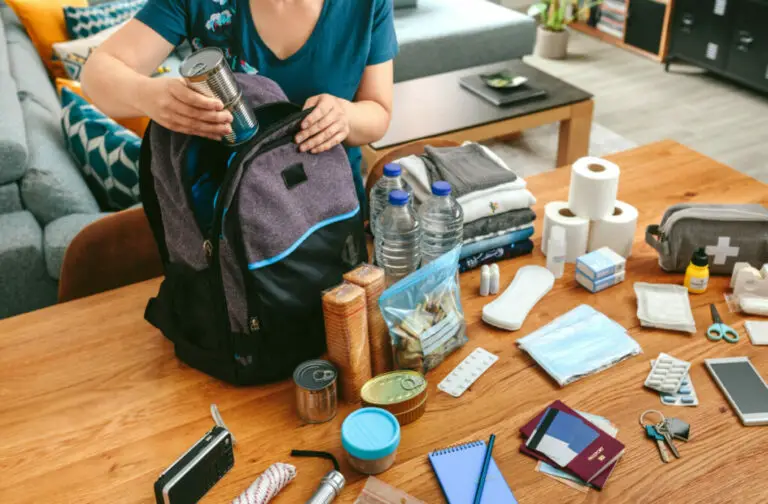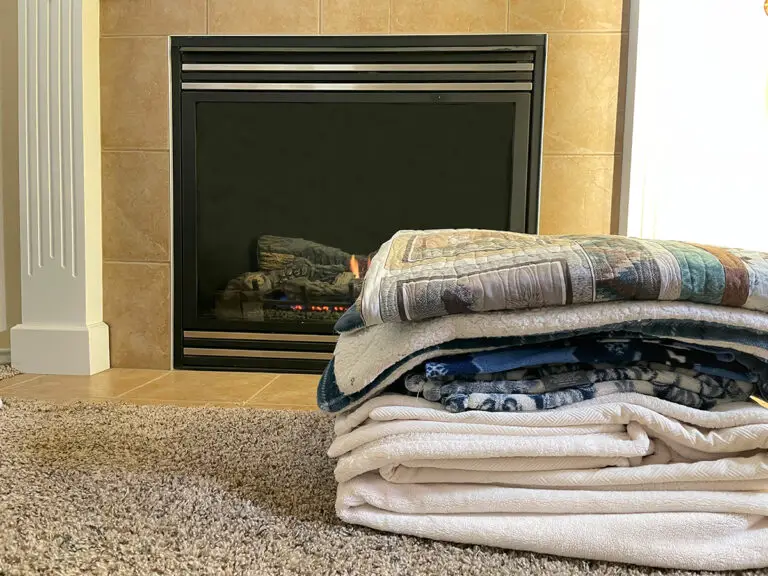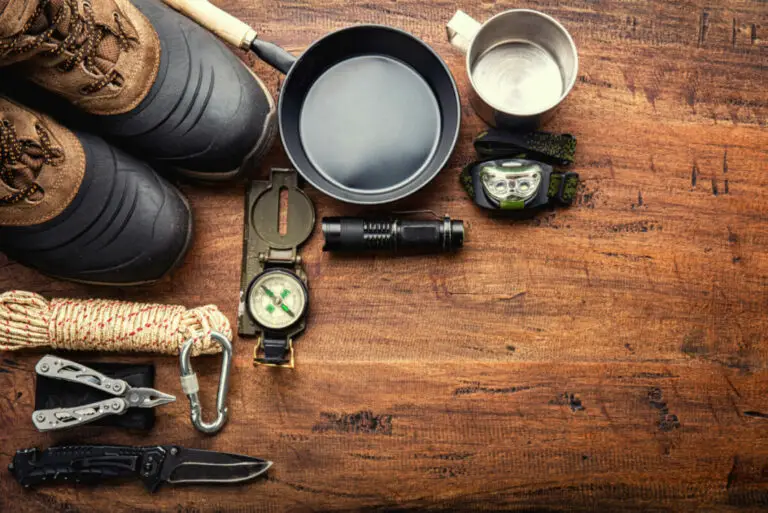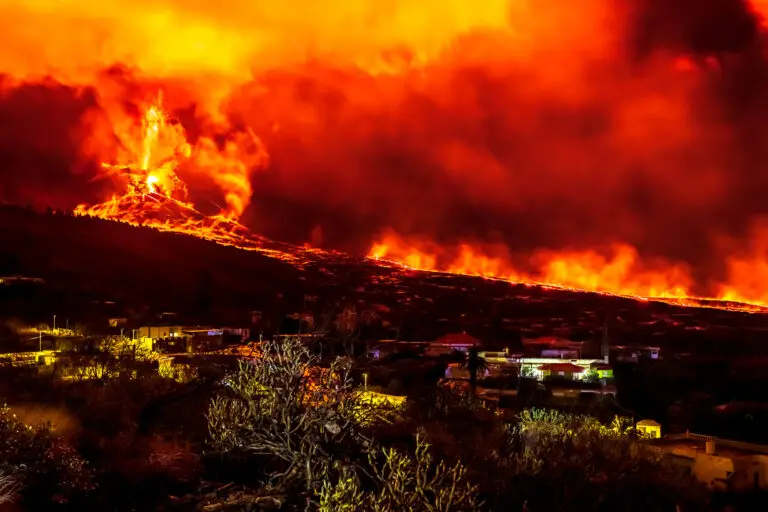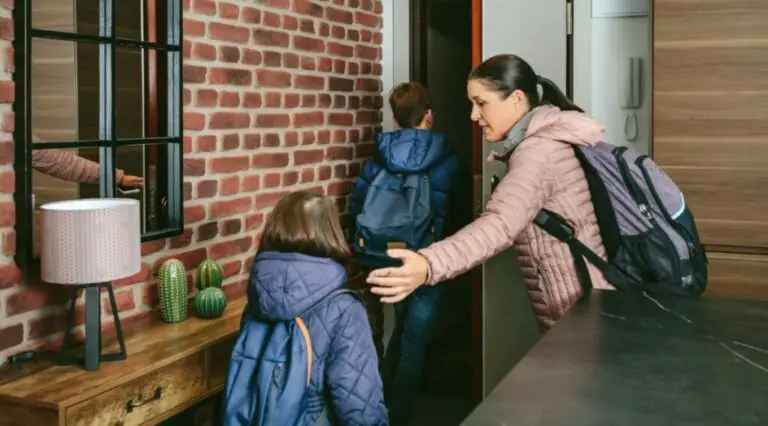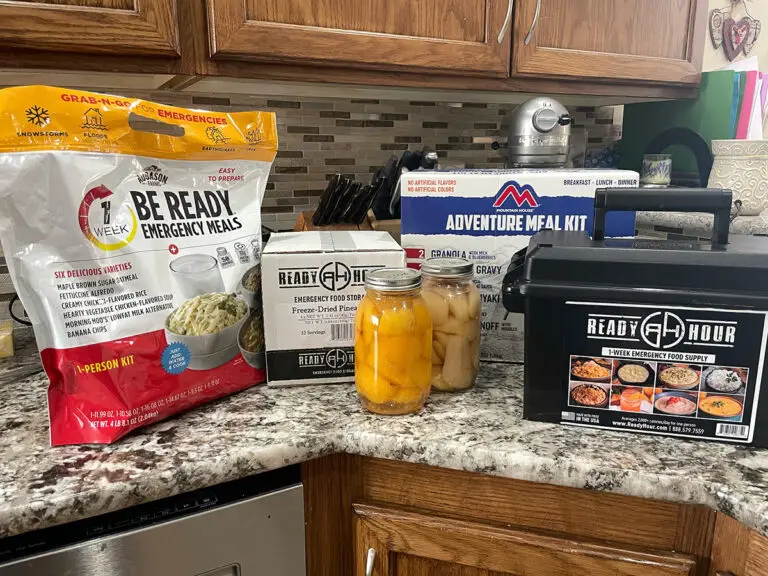In a lifetime, it’s likely that every one of us will be involved in some kind of emergency. Between natural disasters, political and economic turmoil, power outages, and even running out of gas on a toad trip, emergencies large and small will strike.
But knowing that doesn’t mean you need to be stressed and anxious. In fact, I’ve been through various types and degrees of emergencies but I feel a lot of peace and comfort.
Why?
Because I know exactly how to handle emergencies of all types.
While the specific needs vary depending on the type of emergency, there are 3 things that we need. It’s knowing and understanding those needs that make it really quite simple to plan for any likely emergency. And then even if an unlikely emergency arises, you’ll know exactly how to handle it.
Here are the 3 necessities for emergency preparedness, no matter what kind of emergency arises.
In Any Emergency, a Safe Shelter is the #1 Priority
First and foremost, no matter what kind of emergency arises we need to get ourselves out of immediate danger. In a wild environment, that usually means finding a safe place to make shelter. So what does that look like in other, more common emergency situations? Let’s look at a few.
Tropical Storms. If you live in an area where tropical storms—known as hurricanes, typhoons, and tropical cyclones—are likely, you know that getting out of imminent danger is key. Depending on your situation, that might mean boarding everything up and hunkering down, or it might mean evacuating to a safe location.
A safe shelter, in this case, might be a relative’s house or a hotel that’s outside of the path of the storm.
Knowing which to choose is really important. You might have to make a split-second decision, so you need to know how you’ll make that decision if and when the time comes.
If you have a long enough warning and the signs indicate that the storm is coming for you, evacuation is probably the right call. But if you wait too long, or warning doesn’t come early enough, it’s likely that the roads will be packed and you’re better off hunkering down in the safest place you can rather than getting caught in the storm while trying to leave town.
Fires. House fires or wildfires, the impact is similar. In either instance, the shelter you’re in isn’t going to be safe anymore. In this case, it’s important to get to a safe shelter first and foremost. Ideally, we’ll be able to bring or at least have access to the other emergency necessities, but it’s better to get out and survive even if it means leaving other supplies behind.
Power Outages. Power outages might not seem like real emergencies, but a long power outage during really hot or really cold temperatures can be life-threatening. We once had a power outage caused by freezing rain when we lived in Dallas, TX (I know… Texas shouldn’t have freezing rain, but it did). The power outage lasted for a couple of days and everything outside was covered in a thick sheet of ice.
Another time, also in Dallas, we went 2 days without power in July, while my wife was 7 months pregnant and very uncomfortable.
Both of these situations could have been problematic. But in both situations, we knew there were options.
During the ice storm, several of our neighbors stayed at hotels that had backup generators. We also could have called around until we found someone we knew with power. We were far from family but because of prior experience, we were prepared and were able to stay comfortably in our home, with a few adjustments, during both power outages. We were able to make our home the safe shelter.
A Shelter Isn’t Safe Without Heat
This brings me to one important point about safe shelters. In order for a shelter to be truly safe, you need to be able to stay warm; in some climates, you also need to be able to stay cool.
As you consider the most likely emergencies you’ll encounter, think about what options you have for generating heat, or for staying cool if you live in a climate that gets dangerously hot at times.
Remember that it’s easier to heat and cool a small space than a big one.
When we lost power in the summer in Texas, we put a small window air conditioning unit in our bedroom. We’d run in for 30 minutes to an hour at a time using a generator we bought when we lived in rural Appalachia in southwest Virginia.
We experienced some other unexpected emergencies there that really kicked our emergency preparedness into high gear.
I decided that I could cook food on the grill outside, so all we needed to run off the generator was the air conditioner and the refrigerator/freezer, so we alternated between the two.
We kept the door to the bedroom closed except when absolutely necessary and managed to keep it comfortably cool.
In humid climates, a little breeze can be enough to cool you down quite a bit on a hot day. That’s how it was when I lived in Brazil. There, we’d just sweat all the time and enjoy every breeze that came along. I slept with a fan which kept me cool enough to sleep and had the added benefit of keeping mosquitos off of me.
A fan uses way less power than an air conditioner. So if you live in a hot and humid climate consider getting a battery-powered fan.
Heat is the same way. Try to heat a single room, or even a tent within a room to trap as much of the heat into a small space as possible. That will conserve fuel and keep you warmer for longer.
Once You Have a Safe Shelter, Water is the Next Priority
We, humans, don’t last very long without water. While a normal, healthy person can survive for around 3 days without water, that requires us to be pretty sedentary. I don’t know about you but when I start to get really dehydrated, I get tired and weak and it’s hard to think clearly.
Having enough water to get us through the entire emergency situation is critical.
For most of the emergencies we face today, we can get a hold of water. But growing up on a property that got its water from a well, I learned that when we didn’t have power, we also didn’t have water.
Depending on where you live, an issue with the local water supply could leave you completely dry.
Storing a reasonable amount (at least enough for a few days) of drinking water at home is smart. A lot of the emergencies I’ve encountered were the kind where I could safely stay home as long as I had the resources I needed. In all of those instances, having some stored drinking water would suffice.
Let’s look at what you might do in some other cases.
Getting Water in Emergencies If You Have to Leave Home
For quick “get out of town” emergencies, we keep a 72-hour kit for each person in the family. This has some basic supplies, including enough food and water for 3 full days. That’s a minimum of 192 oz, 1.5 gallons, or a little less than 6 liters for an adult.
That’s enough water to sustain you for 3 days, which should be enough time to get to a safe place with a water source.
Again, getting to safety is the priority. But as you think about safe places you could evacuate to, consider access to water.
I also like to keep a basic water filtration option in my emergency 72-hour kit (or bug-out bag) and another in my vehicle so if I were to get stranded or can’t get to my emergency kit, I can still get safe drinking water as long as I can find a water source that’s not salt water.
The easy way to do this is to keep a LifeStraw (affiliate link to Amazon) in your car and another in your 72-hour-kit, maybe even 2 in each place. They’re not expensive and are great for a single person to use.
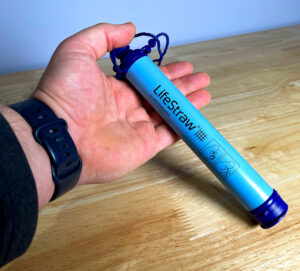
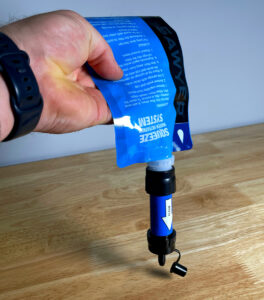
If you have a family, like me, then you’ll want a filter like this one from Sawyer (affiliate link to Amazon). You put a whole gallon (enough water for 2 people for a day) of unfiltered water into the bag and let gravity run it through the filter.
I own both of these filters. I love the LifeStraw for camping, hiking, and preparedness but for the family, I keep the Sawyer one around because it’s more practical for providing clean water to multiple people, and the bag rolls up nicely, so the whole thing doesn’t take up very much space.
Getting Water During Long-Lasting Emergencies
If the emergency situation isn’t going to end very quickly, then you’ll need a plan for getting clean water even if your normal water supply remains unavailable and your home water storage runs out.
I’ve thought through several local sources of freshwater. We have rivers, lakes, ponds, and even canals depending on the time of year. Sure, that water isn’t very appetizing, but that’s a secondary problem. First, we need a water source.
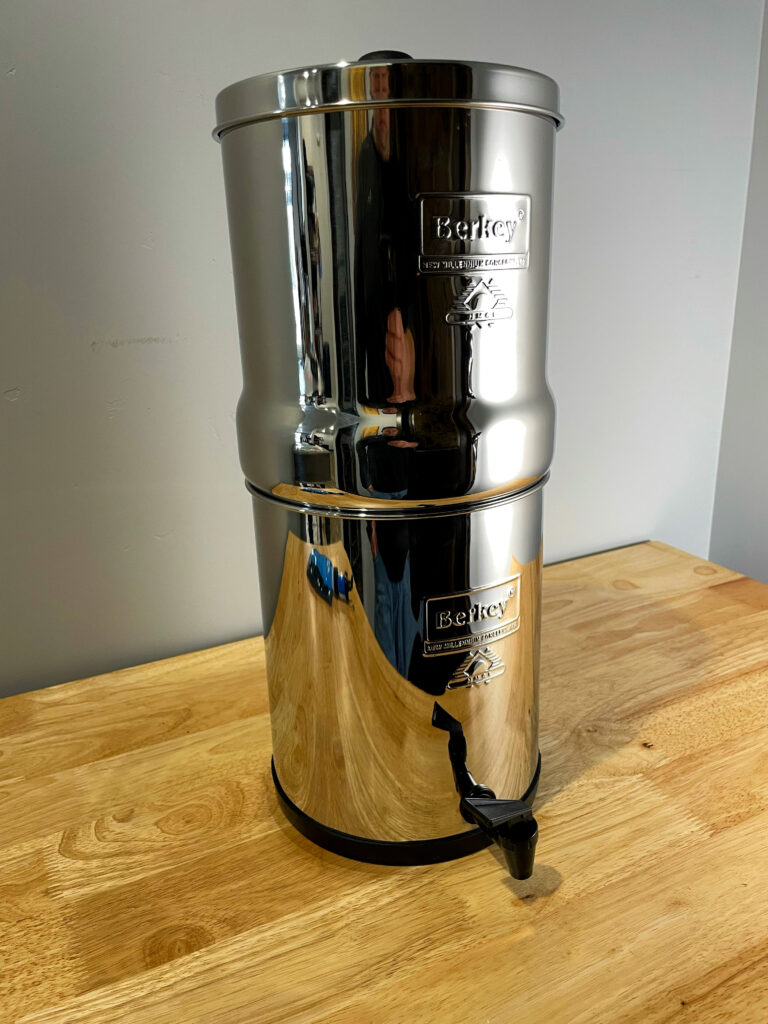
I’m prepared to even drive a ways to a water source with a few 5-gallon water containers. That works for me because I have a plan to easily filter it.
For my home (and the cabin) I’m a big fan of the Berkey water filters. I have this Big Berkey (affiliate link to Amazon) and it can filter enough water in the day to supply my family of 7, since the kids are pretty young. Ideally, I’d have a couple of these or one of the larger ones, like the Royal or Imperial Berkey, but instead I just buy enough filters to fill all 4 filter locations, which filters the water a lot faster than just having the 1 or 2 that usually come with it.
The thing with these filters is that they filter out almost everything. I can literally take water from the nearby river or a pond and pour it into the top and it’ll filter out the bacteria, chemicals, and other unsafe things giving me really clean water.
So for long-lasting emergencies where I may need to start with dirty water, the Berkey-style water filter is basically a must-have.
With a Water Supply Secure, Food Becomes the Priority
Once you have a safe place to be and are out of imminent danger and you have access to clean water, you’ll want to make sure you have enough food to sustain you throughout the emergency.
Emergency Food Storage is one of the things every emergency preparedness-minded person thinks of first. But there’s a lot that goes into planning for emergencies.
First, if you’re going to have to evacuate, do you have enough food that you can quickly take with you in order to sustain you for at least a few days? A good 72-hour-kit or bug-out bag should have enough calories to keep each person in your household going for a full 3 days.
What about food storage for long-lasting emergencies? A lot of people think that these kinds of emergencies are unlikely. I mean, do we really think our society is on the edge of collapse?
But I’ve experienced personal emergencies where a good supply of food storage made all the difference. That’s because these emergencies can include a lay-off from work, or a shortfall in income due to a medical expense?
Unless you want to have to rely on others for your sustenance during these times, you’ll want some food storage.
Don’t get me wrong, I’m all about helping family, friends, and even strangers in need. And I’m not above asking for help when needed (although I need to be better about that). But self-reliance enables us to take care of ourselves and others and it brings me a lot of peace knowing I’m covered.
There is a lot that goes into what kinds of foods to store as well as how much. Way to much for this article. That’s what the rest of this website is for, to help you with those things. For now, just consider this important rule of thumb.
Store the foods you already eat
It does you no good to store a bunch of ingredients you don’t know how to use and that you and your family won’t ever eat. For long-term food storage, start with what you eat now, and just get some more of it.
Then, consider learning to cook some meals with more basic ingredients so you can expand your food storage to include some longer shelf life items.
It’s also a good idea to keep some emergency food around. This kind of food is often freeze-dried and packaged into meal-sized portions so it’s easy to take with you, or use at home. Cooking usually just requires some water and a heat source.
It’s a great option, but it’s not cheap so I wouldn’t beef up my food storage with too much of that.
Water and Food are Essential—Cooking Supplies are Important
While you must have water and food, something to cook it with is going to make your experience a lot better.
If you the emergency allows you to stay home great! You likely have a kitchen full of supplies. But what if you don’t have power. Can you cook without an electric stove or oven, and without a microwave?
Part of a good emergency plan includes options for cooking on-the-go and especially at home in power-outage situations.
There are tons of good solutions. During our Texas ice storm I grilled meat on our propane grill outside and baked a delicious cobbler in a Dutch oven with charcoal. Just make sure you have options for cooking that require no, or at least very little, electricity.
In a 72-hour kit it can be helpful to pack a small backpacking stove, especially if you’re packing freeze-dried food. Another option is to use foods like granola bars, fruit leathers, and other emergency food that doesn’t require hot water to get through those 72 hours.
Those are the 3 necessities that should be the foundation of all of your emergency planning. If you can identify the most likely emergency situations you’ll face and account for these 3 necessities you’ll be well on your way to creating your ideal emergency plan.

